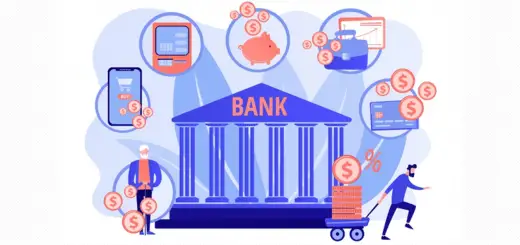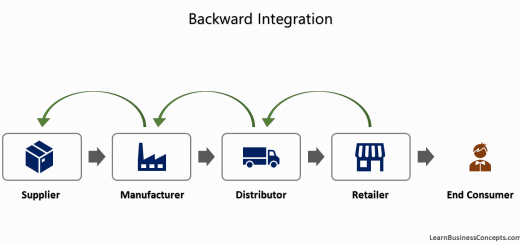Porter’s Five Forces: Applied To Starbucks with Examples
Porter’s Five Forces was developed by Michael Porter, a professor at Harvard Business School. The analysis is used to understand the competitive environment of an industry by examining five key factors: the threat of new entrants, bargaining power of suppliers, bargaining power of buyers, threat of substitute products, and intensity of competitive rivalry.
This analysis is useful for businesses as it provides a framework for understanding the competitive landscape of their industry. By examining each of the five forces, businesses can identify potential risks and opportunities, and develop strategies to succeed in the market.
Starbucks Corporation, commonly known as Starbucks, is a multinational coffeehouse chain that originated in Seattle, Washington, in 1971. Over the years, Starbucks expanded globally and now operates thousands of stores in more than 80 countries. The company has diversified its product offerings to include a wide range of beverages, including coffee, tea, and other specialty drinks, as well as pastries, sandwiches, and snacks.
In recent years, Starbucks has embraced digital technology and mobile ordering, enhancing convenience for customers. The company launched the Starbucks Rewards program, allowing customers to earn points and enjoy personalized offers and discounts.
By using Porter’s Five Forces analysis, we can gain a better understanding of the competitive environment in this business. Following is a detailed description of each force applied to Starbucks Corporation, the dominant player in the global coffee industry.
1. The Threat of New Entrants
This force refers to the ease or difficulty with which new companies can enter the market. High barriers to entry, such as high capital requirements, regulatory restrictions, and economies of scale, can make it difficult for new companies to enter the market. In contrast, low barriers to entry, such as low startup costs, easy access to technology, and low regulatory restrictions, can make it easier for new companies to enter the market.
The threat of new entrants in the coffee industry is relatively moderate. While it is relatively easy to open a coffee shop, establishing a globally recognized brand like Starbucks requires significant resources, expertise, and extensive distribution networks. Starbucks has a strong presence worldwide, with a large number of stores and a well-established supply chain. The brand recognition and customer loyalty it has built over the years act as barriers for potential new entrants.
As one Starbucks’ store manager described it, “We want to provide all the comforts of your home and office. You can sit in a nice chair, talk on your phone, look out the window, surf the web…oh, and drink coffee too.” Notice that she mentioned “drink coffee” last. In essence, traditional coffee shops want their customers to “grab a cup of coffee.” Starbucks wants its customers to grab a comfortable chair. (Source: How Starbucks Changed the Brand Game to Dominate the Coffee Market - By ceoworld.biz).
2. The Bargaining Power of Suppliers
This force refers to the power that suppliers have over the industry. Suppliers can exert power by controlling the supply of critical inputs, charging high prices, or limiting the quality of their products.
Starbucks exercises significant control over its supply chain. The company has established strong relationships with coffee bean suppliers worldwide, often working directly with farmers through its ethical sourcing programs. While Starbucks relies heavily on coffee suppliers, the company’s size and brand recognition give it negotiating power and access to high-quality beans. However, external factors such as climate change and political instability in coffee-growing regions can impact the availability and price of coffee beans.
Starbucks uses a vertically integrated supply chain, which means that the company is involved in every step of its supply chain process, all the way from the coffee bean to the cup of coffee sold to consumers. The use of a vertically integrated system means that Starbucks works directly with its nearly 300,000 worldwide coffee growers. The company believes that interacting directly with farmers ensures that all of its coffee beans will achieve the same quality and flavor standards. The company even has its own Coffee and Farmer Equity (C.A.F.E) standards and Coffee Sourcing Guidelines (CSG), which require that all suppliers must meet certain ethical, sustainability, and quality standards. (Source: Supply Chain Putting the Star in Starbucks - By fronetics.com).
3. The Bargaining Power of Buyers
This force refers to the power that buyers have over the industry. Buyers can exert power by demanding low prices, high quality, or other favorable terms. In industries where buyers have many options or where the products are not highly differentiated, buyers have more power.
Buyer power in the coffee industry varies depending on the location and customer segment. Starbucks caters to a diverse customer base ranging from individual consumers to businesses. However, consumers have a range of alternatives, including other coffeehouses, cafes, convenience stores, and at-home brewing options. Customer loyalty programs, personalized experiences, and the quality of Starbucks’ offerings contribute to maintaining buyer loyalty, mitigating the power of customers to some extent.
Friendly staff, good WiFi, large windows (natural light), open spaces, clean restrooms, and comfortable seating all add up to an enjoyable experience. Starbucks understood early on that we live in the Experience Economy, where customer loyalty cannot be built without an excellent customer experience – precisely why so many of us choose to work or study from Starbucks (Source: Why we love starbucks’ average coffee - By evolving-digital.com)
4. The Threat of Substitute Products or Services
This force refers to the threat of substitutes, or alternative products or services that can fulfill the same customer need. The availability of substitutes can limit the pricing power of companies in the industry, as customers can choose to switch to substitutes if prices become too high.
Starbucks faces a moderate threat from substitute products. Consumers have alternatives to Starbucks’ offerings, such as tea, soft drinks, energy drinks, and other hot and cold beverages. However, Starbucks has expanded its menu to include a wide range of beverages, food items, and merchandise to cater to diverse preferences and provide an elevated coffeehouse experience. The company’s focus on quality, customization, and creating a unique atmosphere helps differentiate its offerings and reduce the threat from substitutes.
.
5. The Intensity of Competitive Rivalry
This force refers to the intensity of competition among existing companies in the industry. The level of competition depends on factors such as the number of competitors, the level of differentiation, and the degree of price competition. High levels of competition can lead to lower prices, reduced profitability, and higher marketing costs.
Starbucks operates in a highly competitive environment. The coffeehouse industry has multiple competitors, including other global chains, local coffee shops, and fast-food restaurants offering coffee products. Competitive factors include pricing, product quality, customer service, store locations, and brand reputation. Starbucks maintains a strong market position through its premium coffee offerings, customer experience, and loyal customer base.
Key Takeaways
Starbucks operates in a highly competitive coffeehouse industry, facing competition from global chains, local coffee shops, and fast-food restaurants. While the company exercises control over its supply chain through strong relationships with coffee bean suppliers, external factors can impact availability and prices. Buyer power varies, but Starbucks maintains loyalty through personalized experiences and high-quality offerings.
The threat of new entrants is moderated by the brand’s global recognition and established presence. Although substitute products exist, Starbucks mitigates the threat by offering a diverse menu and creating a unique atmosphere.
History and Overview about Starbucks
Starbucks Corporation, commonly known as Starbucks, is a multinational coffeehouse chain that originated in Seattle, Washington, in 1971. The company was founded by three partners: Jerry Baldwin, Zev Siegl, and Gordon Bowker, who were inspired by Alfred Peet’s coffee and aimed to bring high-quality coffee to the American market. Originally, Starbucks primarily sold coffee beans and equipment, rather than prepared beverages.
In 1982, entrepreneur Howard Schultz joined the company as the Director of Retail Operations and Marketing. Schultz traveled to Italy and was captivated by the Italian coffee culture, which inspired him to introduce a similar concept in Starbucks stores.
He left Starbucks briefly to start his own coffeehouse chain, Il Giornale, but returned in 1987 to purchase Starbucks and merge the two companies, rebranding them as Starbucks Corporation.
Under Schultz’s leadership, Starbucks experienced rapid expansion and growth. The company pioneered the concept of a “third place,” providing customers with a welcoming and comfortable environment to enjoy their coffee. Starbucks introduced innovative drinks, such as the Frappuccino and Pumpkin Spice Latte, which became iconic offerings and contributed to the company’s success.
Over the years, Starbucks expanded globally and now operates thousands of stores in more than 80 countries. The company has diversified its product offerings to include a wide range of beverages, including coffee, tea, and other specialty drinks, as well as pastries, sandwiches, and snacks. Starbucks is known for its commitment to ethical sourcing practices, supporting coffee farmers, and implementing sustainability initiatives.
In recent years, Starbucks has embraced digital technology and mobile ordering, enhancing convenience for customers. The company launched the Starbucks Rewards program, allowing customers to earn points and enjoy personalized offers and discounts. Starbucks has also made efforts to cater to evolving consumer preferences by introducing plant-based milk alternatives and expanding its range of non-coffee beverages.
Today, Starbucks continues to be a dominant player in the global coffee industry, recognized for its premium quality coffee, distinctive store atmosphere, and emphasis on customer experience. The company remains committed to its mission of “inspiring and nurturing the human spirit” and aims to maintain its position as a leading coffeehouse chain while fostering positive social and environmental impact.
Read More About Porter’s Five Forces,
- Porter’s Five Forces: Explanation with Industry Examples
- Porter’s Value Chain: Primary & Support/Secondary Activities
- Porter’s Five Forces: Advantages and Disadvantages
- How to Apply Porter’s Five Forces to Industry / Business: Step-By-Step Simple Detail Guide with Examples
- Porter’s Five Forces: Applied To Airline Industry with Real World Examples
- Porter’s Five Forces: Applied To Fast Food Restaurants Industry with Real World Examples
- Porter’s Five Forces: Applied To Banking Industry with Real World Examples
- Porter’s Five Forces: Applied To Clothing / Fashion Industry with Real World Examples


